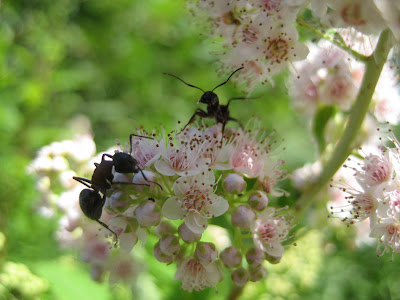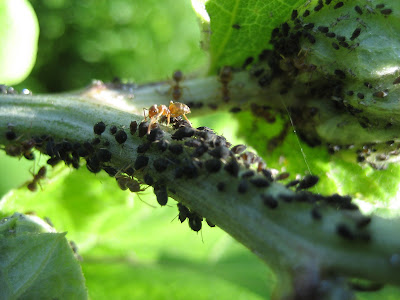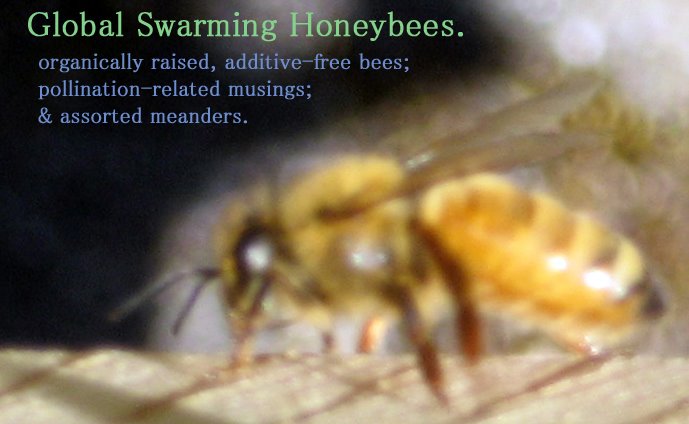 Two inexplicable habits have take hold this summer: the adoption of a mason jar as my favorite drinking glass and a tendency, weather permitting, to lunch on the front steps of my house, rather than up by the vegetable garden—in a proper chair, a creaky old Adirondack chair—as I have in the five summers I’ve been in this place.
Two inexplicable habits have take hold this summer: the adoption of a mason jar as my favorite drinking glass and a tendency, weather permitting, to lunch on the front steps of my house, rather than up by the vegetable garden—in a proper chair, a creaky old Adirondack chair—as I have in the five summers I’ve been in this place.
The mason jar has a smooth, thick rim that feels good on my lips, and something about a jar like that conjures thoughts of lemonade, simplicity, and summers past—way past, like before I was born.
But it’s the latter passion that’s the subject of this essay, for here there are no cars going by, no passersby in intriguing garb, no chats with neighbors, no stage-whispered cell phone diatribes, and no public psychodramas, as may be enjoyed (or not) from my stoop in Brooklyn. (Where I—in friendlier, less frenetic, and decidedly younger days—spent a fair amount of time until a prodigious band of house sparrows took up residence near a window sill above my favored spot, literally unseating me with a maelstrom of wayward nesting materials and nefarious effluvium.)
In short, there’s nothing much to be gained from sitting on the front steps of this remote rural farmhouse, except a view of the dog’s muddy water bowl and a two-by-two-foot patch of cement—the only cement around, except for the old barn foundation out back. The view from the vegetable garden up the hill is far superior, with its bee-loud glade of borage and its flowering dill, upon which the wasp-waisted wasps alight with balletic grace.
The stoop is where I’m sitting now, and it’s hard on back and butt alike. But it’s here that lunch is now being served, accompanied by iced mint tea in a Ball jar. And it’s here that I’ve come upon something that easily upstages the dog bowl on my attention-o-meter.
I’m referring, of course, to that inevitable sidekick of concrete, the ant. Cement, ants, and hot summer days—they go together like PB and J, but then ants go with pretty much everything. As a city kid dysphoric with the conviction that I was meant for the farm, attention to sky above and earth below meant awareness of whatever hint of wildlife might be glimpsed on a typical Manhattan sidewalk. Sometimes it was a ladybug or fallen fledgling. Once, I remember, it was a praying mantis—indelible thrill. But, for the most part, in the flat, unyielding kingdom of concrete, ants ruled the roost. I spent hours watching, following, and yes, annoying them.
As a city kid dysphoric with the conviction that I was meant for the farm, attention to sky above and earth below meant awareness of whatever hint of wildlife might be glimpsed on a typical Manhattan sidewalk. Sometimes it was a ladybug or fallen fledgling. Once, I remember, it was a praying mantis—indelible thrill. But, for the most part, in the flat, unyielding kingdom of concrete, ants ruled the roost. I spent hours watching, following, and yes, annoying them.
Ants have continued to hold my interest to some degree over the years; I’ll never forget seeing a seemingly unending line of leafcutter ants marching in perfect single file across the forest floor in a Costa Rican cloud forest, leaf fragments held proudly aloft in their impressive mandibles. But in terms of piquing deep interest, ants have definitely taken a back seat, as it were, to moths, butterflies, caterpillars, worms, and other bugs in these, my “adult years.”

 Beekeeping recharged my interest in ants. Honeybees and ants are, after all, the most advanced of social insects. They share much in common besides smarts, industriousness, and good looks—including caste systems, queens, female workers, and exceedingly intricate lifestyles. They also share a sweet spot on the Linnaean roadmap under the order Hymenoptera [meaning hymen (membrane) + pteron (wing)].
Beekeeping recharged my interest in ants. Honeybees and ants are, after all, the most advanced of social insects. They share much in common besides smarts, industriousness, and good looks—including caste systems, queens, female workers, and exceedingly intricate lifestyles. They also share a sweet spot on the Linnaean roadmap under the order Hymenoptera [meaning hymen (membrane) + pteron (wing)].
So taking my lunch on the stoop now includes watching the ants—at least three different species, if I’m not mistaken—go about their busy business. My observations are of the most rudimentary kind: There’s an ant carrying a blade of grass (what for? food? housing material? a sword?). There’s an ant that seems to be just wandering (scoping out new territory? coming back to the colony after important business in town? looking for food?). There’s an ant staggering under the weight of a much larger, dead ant (an enemy killed? a random piece of food located by chance?).
I watch from above, more distant than I’d like to be, even when, lured by fascination, I find myself down on hands and knees to get a closer look. Always, my vantage point is that of an ill-informed observer with barely a clue about the proceedings, an outsider of astonishing proportions. Not that it would improve my understanding, but I do wish my renewed interest had taken hold a few years ago, when my vision was sharper. Now, it’s all about pulling off my eyeglasses and getting in some true “face-time” with my tiny brethren. But crawling around like that, face to the ground, gets the dog all excited and causes no end of distraction to all concerned.
Not that it would improve my understanding, but I do wish my renewed interest had taken hold a few years ago, when my vision was sharper. Now, it’s all about pulling off my eyeglasses and getting in some true “face-time” with my tiny brethren. But crawling around like that, face to the ground, gets the dog all excited and causes no end of distraction to all concerned.
I have the same wish about my start in beekeeping—younger eyes would have been a real advantage in locating those tiny, all-important eggs deep in their cells during hive inspections. Often, I must content myself with locating larvae, which, being further along on their developmental journey, are big enough to be readily seen. But with the bee-veil and the difficulty of removing eyeglasses with a veil on, important details—and the pleasures of deep viewing—are muted or lost. The answer, I suppose, is to get braver about skipping the veil and better at handling the bees so the veil isn’t quite so essential; alas, I’m not there yet. But let’s keep our eye on the prize here: the manifold fascinations of ant-watching. Try it next time you’re just about anywhere. There are ants in the trees, on the ground, in your backyard, at your picnic and quite possibly hanging around your kitchen.
But let’s keep our eye on the prize here: the manifold fascinations of ant-watching. Try it next time you’re just about anywhere. There are ants in the trees, on the ground, in your backyard, at your picnic and quite possibly hanging around your kitchen.
I spilled a little honey on the porch the other day and within a couple of hours, two big black ants were in serious honey-removal mode right there on the porch—I mean, inside, where never before had I seen an ant appear. Like honeybees, ants are smart. They’re watching you.
Early this summer, I found some ants “tending” aphids on a burdock—a behavior I’d read about with fascination but never witnessed first-hand. Assuming the guise of dairy farmers, ants protect and care for the tiny aphids and then “milk” them to obtain the sweet liquids that exude from the aphids’ bodies. This is symbiosis, ranching, mutualism, and mind-blowing intricacy all rolled up into one, right there, on a weed along the driveway’s edge.
 According to a new and much needed field guide called Ants of North America, there may be as many as 1,000 species of ants in North America alone. From the introduction:
According to a new and much needed field guide called Ants of North America, there may be as many as 1,000 species of ants in North America alone. From the introduction:
“There is something profoundly fascinating about ants, even when they are being a nuisance. In large part, this is because they do many things that remind us of ourselves, and have been doing them for over 100 million years. Like humans, ants are social, living exclusively in highly organized societies that evolved originally from family groups (in the case of ants, the group consists of a mother and her offspring). Like humans, ants exhibit a seemingly endless variety of complex social behaviors. Ants were the first herders, agriculturalists, and food storage experts. Some ants fight vicious territorial wars, some ‘enslave’ other ants, and in North America alone, over 20 species of predatory army ants march in leaderless packs on perpetual campaign. On the brighter side, they take excellent care of their mothers and their sisters, and even their brothers and sons—who do little but eat and never help with the chores.”
That last bit, of course, echoes the honeybee approach to living, while the part about predatory army ants “on perpetual campaign” makes me wonder if our quote unquote leadership in Washington might possibly be an abnormally large, badly misshapen, and intellectually inferior species of ant yet to be identified as such and taxonomically put in its place.

Here’s a bit more from the intro to
Ants of North America:
“Sadly, few comprehend the vital importance of ants to the ecosystems that sustain human life on this planet. In North America, for example, close to 1,000 species of ants play an essential role in the proper functioning of nearly all terrestrial ecosystems. They are prominent agents in the breakdown of organic matter, nutrient cycling, soil turnover and aeration, seed dispersal, seed consumption, and plant protection. If ants went on strike and ceased their ecological services, the consequences would be profoundly disruptive to the natural world—and eventually tragic for humanity.”
Talk about an underrated treasure.





